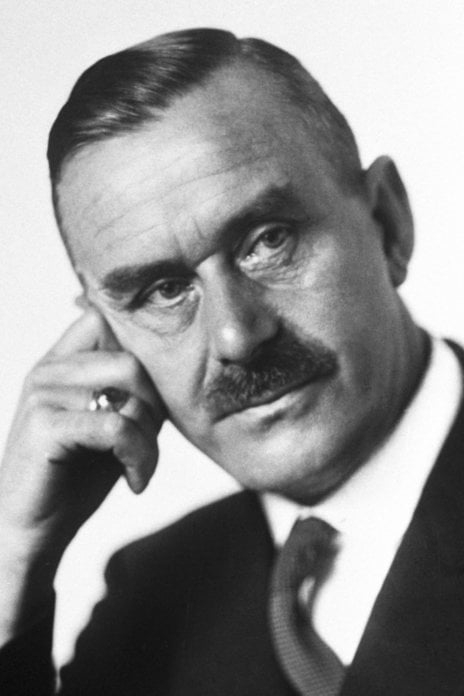
Paul Thomas Mann was a German novelist, short story writer, social critic, philanthropist, essayist, and the 1929 Nobel Prize in Literature laureate. His highly symbolic and ironic epic novels and novellas are noted for their insight into the psychology of the artist and the intellectual. His analysis and critique of the European and German soul used modernized versions of German and Biblical stories, as well as the ideas of Johann Wolfgang von Goethe, Friedrich Nietzsche, and Arthur Schopenhauer.

Luchino Visconti di Modrone, Count of Lonate Pozzolo was an Italian filmmaker, theatre and opera director, and screenwriter. He was one of the fathers of cinematic neorealism, but later moved towards luxurious, sweeping epics dealing with themes of beauty, decadence, death, and European history, especially the decay of the nobility and the bourgeoisie. Critic Jonathan Jones wrote that “no one did as much to shape Italian cinema as Luchino Visconti.”
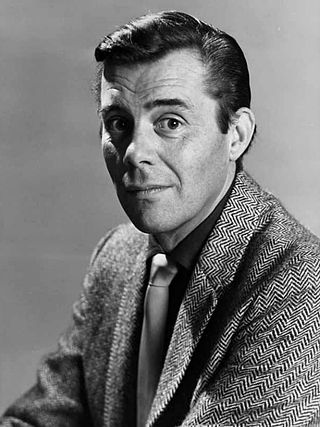
Sir Dirk Bogarde was an English actor, novelist and screenwriter. Initially a matinée idol in films such as Doctor in the House (1954) for the Rank Organisation, he later acted in art house films, evolving from "heartthrob to icon of edginess".
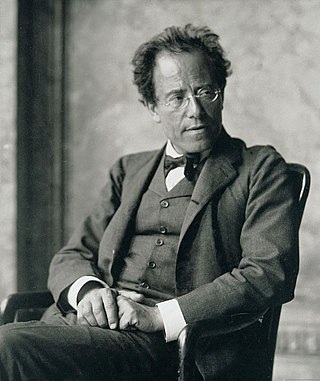
The Symphony No. 5 by Gustav Mahler was composed in 1901 and 1902, mostly during the summer months at Mahler's holiday cottage at Maiernigg. Among its most distinctive features are the trumpet solo that opens the work with a rhythmic motif similar to the opening of Ludwig van Beethoven's Symphony No. 5, the horn solos in the third movement and the frequently performed Adagietto.

The Lido, or Venice Lido, is an 11-kilometre-long (7-mile) barrier island in the Venetian Lagoon, Northern Italy; it is home to about 20,400 residents. The Venice Film Festival takes place at the Lido late August/early September.
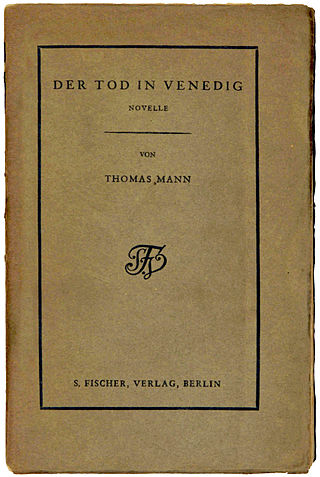
Death in Venice (German: Der Tod in Venedig) is a novella by German author Thomas Mann, published in 1912. It presents an ennobled writer who visits Venice and is liberated, uplifted, and then increasingly obsessed by the sight of a boy in a family of Polish tourists—Tadzio, so nicknamed for Tadeusz. Tadzio was based on a real boy named Władzio whom Mann had observed during his 1911 visit to the city.
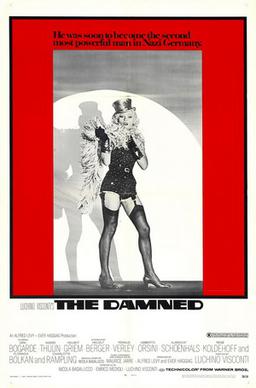
The Damned (Götterdämmerung) is a 1969 historical-drama film directed and co-written by Luchino Visconti, and starring Dirk Bogarde, Ingrid Thulin, Helmut Berger, Helmut Griem, Umberto Orsini, Charlotte Rampling, Florinda Bolkan, Reinhard Kolldehoff and Albrecht Schönhals in his final film. Set in 1930s Germany, the film centers on the Essenbecks, a wealthy industrialist family who have begun doing business with the Nazi Party, and whose amoral and unstable heir, Martin, is embroiled in his family's machinations. It is loosely based on the German Krupp family of steel industrialists from Essen.

The Folding Star is a 1994 novel by Alan Hollinghurst.

Death in Venice, Op. 88, is an opera in two acts by Benjamin Britten, his last. The opera is based on the novella Death in Venice by Thomas Mann. Myfanwy Piper wrote the English libretto. It was first performed at Snape Maltings, near Aldeburgh, England, on 16 June 1973.

Björn Johan Andrésen is a Swedish actor and musician. He is best known for playing the 14-year-old Tadzio in Luchino Visconti's 1971 film adaptation of the 1912 Thomas Mann novella Death in Venice. He also played a minor role in Ari Aster's 2019 folk horror film Midsommar.
Death in Venice may refer to:

Romolo Valli was an Italian actor.
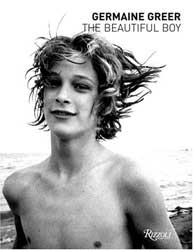
The Beautiful Boy is a book by radical feminist academic Germaine Greer, published in 2003 as The Boy in the Commonwealth by Thames & Hudson and in the rest of the world by Rizzoli. Its avowed intention was "to advance women's reclamation of their capacity for and right to visual pleasure". The book is a study of the youthful male face and form, from antiquity to the present day, from paintings and drawings to statuary and photographs.

Mahler is a 1974 British biographical film based on the life of Austro-Bohemian composer Gustav Mahler. It was written and directed by Ken Russell for Goodtimes Enterprises, and starred Robert Powell as Gustav Mahler and Georgina Hale as Alma Mahler. The film was entered into the 1974 Cannes Film Festival, where it won the Technical Grand Prize.
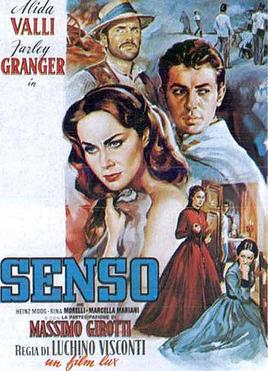
Senso is a 1954 Italian historical melodrama film directed and co-written by Luchino Visconti, based on Camillo Boito's novella of the same name. Set during the Third Italian War of Independence, the film follows the Italian Contessa Livia Serpieri, who has an affair with the Austrian Lieutenant Franz Mahler. It was Visconti's first color film.

San Nicolò al Lido refers to both the San Nicolò Church and most importantly to its annexed Monastery of San Nicolò located in Venice, northern Italy. The two Catholic institutions are located in the northern part of the Lido di Venezia and house the relics of Saint Nicholas, patron of sailors. From this church, the traditional thanksgiving Mass of the Sposalizio del Mare is celebrated. The complex houses monks of the Franciscan order.

Ruggero Mastroianni was an Italian film editor. In his obituary of Mastroianni, critic Tony Sloman described him as "arguably, the finest Italian film editor of his generation."
Richard Arthur Sohl was an American pianist, songwriter and arranger, best known for his work with the Patti Smith Group. He also played with Iggy Pop, Nina Hagen and Elliott Murphy. He died on June 3, 1990, of a heart attack while on vacation in Cherry Grove, New York.

Władysław Gerard Jan Nepomuk Marya Moes was a Polish landowner and has been claimed as the inspiration for the character Tadzio in Thomas Mann’s novella Death in Venice, which was filmed as Death in Venice by Luchino Visconti.

The Most Beautiful Boy in the World is a 2021 Swedish documentary film about Björn Andrésen and the effects of fame thrust upon him when he appeared in Luchino Visconti's 1971 film Death in Venice. Andrésen was just 16 when the film came out, and was unprepared for instantly becoming an international celebrity.


















